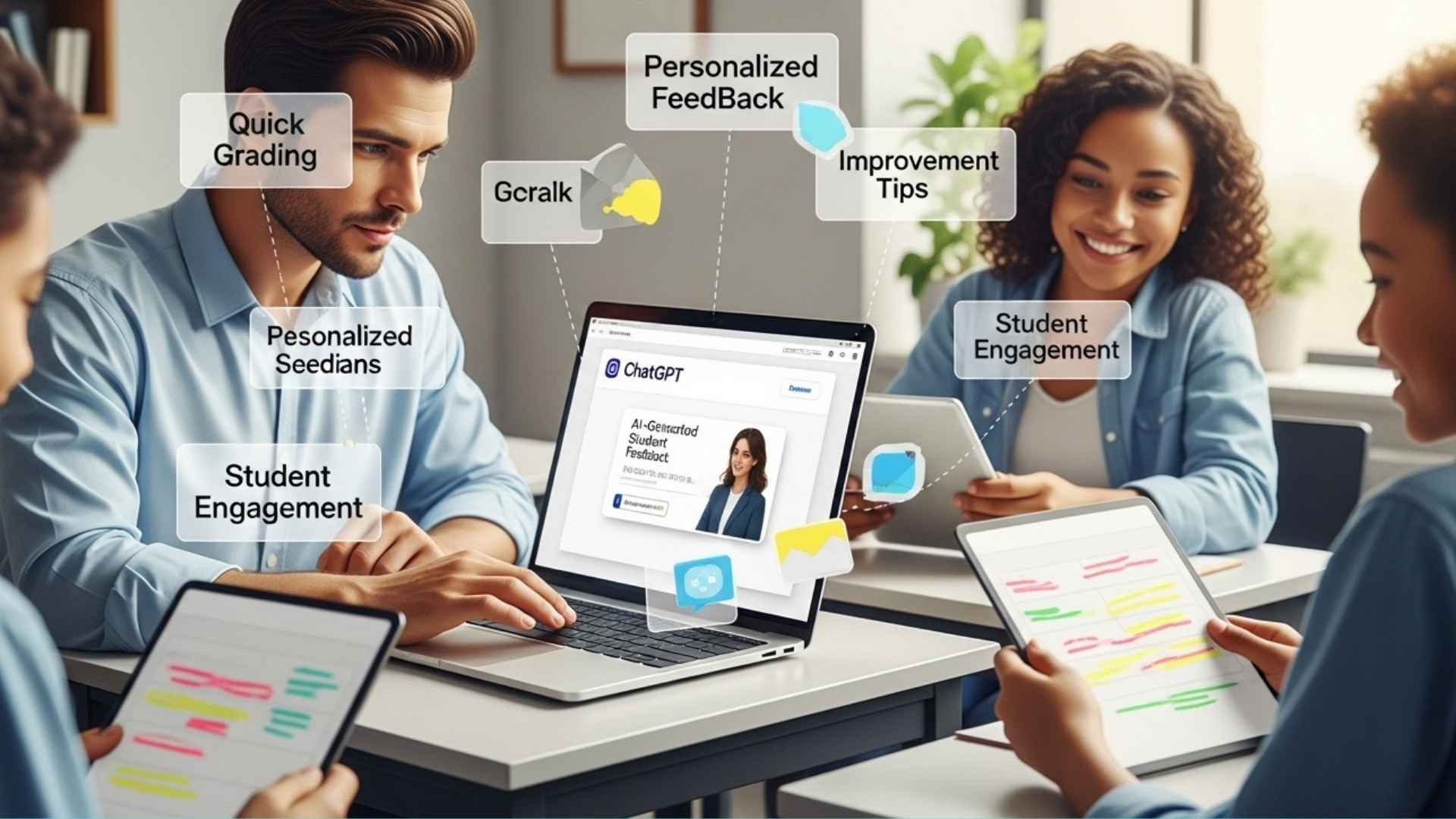ChatGPT has become an invaluable tool for educators. ChatGPT provides immediate, consistent, and personalized feedback.
To make the most of ChatGPT’s capabilities, you can provide specific, role-specific prompts and guide the AI to produce detailed and relevant feedback.
In this article, we’ll explore how to design role-specific prompts, what the benefits of ChatGPT are, and how to overcome the challenges.
Benefits of Giving Feedback Using ChatGPT
1. Immediate, Detailed, and Effective Feedback
- ChatGPT saves time by providing immediate insights and ensures the detail and quality of feedback.
2. Personalized Suggestions for Improvement
- Role-specific prompts can be tailored to each student’s unique work and meet their needs.
3. Consistent Feedback for All Submissions
- Using structured, role-specific prompts ensures fairness and consistency in feedback.
Steps to Using ChatGPT to Provide Feedback
1. Input student work into ChatGPT with role-specific prompts
- When designing prompts, give ChatGPT a clear role, such as “You are a writing expert” or “You are a former math teacher.”
2. Use structured prompts for comprehensive feedback
- To get detailed feedback, ask for feedback in specific areas such as content, clarity, and logic.
3. Check the accuracy of the feedback generated by the AI
- Always review the AI’s results against the criteria you are scoring to ensure they meet educational objectives.
AI Feedback Prompt Examples (by Role)
1. For Essays
Prompt: “You are a college-level writing instructor. Evaluate this essay’s thesis clarity, coherence, and argument strength. Highlight any key points that need improvement.”
2. For Creative Writing
Prompt: “You are a writing instructor. Analyze the character development and plot structure of this story. Suggest ways to increase the emotional level and pacing of the story.”
3. For Math Answers
Prompt: “You are a high school math teacher. Review the accuracy and logical steps of this math answer. Provide constructive feedback on how the explanation could be simplified or improved.”
4. For Research Papers
Prompt: “You are a research methodology expert. Analyze the methodology section of this paper for clarity, accuracy, and relevance to the research objectives. Make suggestions for improvement.”
5. For Speaking Skills
Prompt: “You are a public speaking coach. Evaluate the script of this speech for structure, persuasiveness, and clarity. Make suggestions for how to make this speech more persuasive.”
Tips for Effective AI Feedback
1. Create prompts that align with learning objectives
- Include specific instructions on the key points of AI feedback, such as grammar, creativity, or critical analysis.
2. Combine AI insights with your own expertise
- Add your own thoughts to ChatGPT’s feedback to make it more complete.
3. Encourage students to reflect on their own
- Share feedback with questions like “How do you think you would address these suggestions?” and encourage students to think for themselves.
Challenges to Consider
1. Possible Contextual Misunderstanding
- ChatGPT works best with clear and detailed prompts. Broad or vague instructions can lead to general feedback.
2. Potential for Errors or Bias
- Review feedback generated by AI to ensure it is free of errors or unintentional bias.
3. Maintaining a Balance Between AI and Human Feedback
- While ChatGPT can save time, it is important to maintain a human element to maintain trust and engagement.
Final Thoughts
When used strategically, ChatGPT can significantly enhance the feedback process for educators. By using role-based prompts and tailoring feedback to students’ needs, educators can provide accurate, actionable, and supportive assessments.
Also Read: Top 11 Benefits of Using Machine Learning in Education
When integrating ChatGPT into your teaching practices, remember that ChatGPT is not a substitute for your expertise, but rather a complement.




